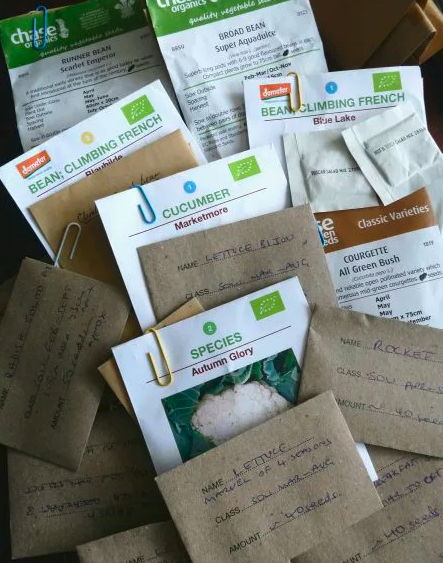 Want to get your hands on some new or unique seeds? Consider hosting a seed-swap party this spring. A seed-swap party is a fun way to connect with your community, save money, and discover locally adapted and sometimes even rare seeds. During a seed-swap party, gardeners have the opportunity to bring their seed collections to a designated venue and trade with other gardeners who have also brought seeds. As many gardeners tend to have leftover seeds, a spring seed-swap party can be a great way to discourage waste and get the community excited about gardening.
Want to get your hands on some new or unique seeds? Consider hosting a seed-swap party this spring. A seed-swap party is a fun way to connect with your community, save money, and discover locally adapted and sometimes even rare seeds. During a seed-swap party, gardeners have the opportunity to bring their seed collections to a designated venue and trade with other gardeners who have also brought seeds. As many gardeners tend to have leftover seeds, a spring seed-swap party can be a great way to discourage waste and get the community excited about gardening.
Find a Venue
One of the first things you’ll need to do when planning a seed-swap party is to find a suitable venue. The venue will need to be large enough to accommodate the number of people you expect and should be set up in a way that allows traffic to easily flow around tables. In addition to venues like party halls, you may want to look into renting a meeting room or ballroom at a hotel or reserving a conference center. You could also ask about rental spaces available at your local community center. Of course, if you’re just having a get-together with a few friends, your living room might be plenty of space. If the weather is nice, host the party outdoors: Just be sure to make the space comfortable for your guests with patio umbrellas for shade and sufficient seating.
Get the Word Out
Once you have narrowed down a time and place, you will want to notify people about the event. If you plan on inviting just a small group of friends and coworkers, an email or text may be sufficient. If you are hosting a seed-swap party with a larger group or are inviting the entire community, you will need to be more creative. Notify local gardening groups, reach people through classified ads, and add your event to community bulletin boards. You can also get the word out by sharing information about the party on social media and by having it published on your local chamber of commerce calendar.
Gather Materials
When hosting a seed-swap party, it’s important to be organized. While your guests will be bringing their own seeds to swap, you will need to provide certain materials to ensure that the event goes smoothly. Bring small containers that guests can use to transport their seeds as well as small plastic baggies, pens, and markers. You may also want to create note cards that have information about various seed types, how to grow your own seeds, and other seed-starting basics. Encourage your guests to bring in their seeds prepackaged and labeled so there is no confusion about what kind the seeds are and who they belong to.
Know Your Seeds
When it comes to seed-swapping, some types of seeds are better than others. Common seeds, such as flower, fruit, and vegetable seeds that you would find at your local gardening store, are fine choices. To expand the selection, you may also want to include some heirloom varieties. However, you want to avoid very old seeds that are not likely to be viable. Seeds have an average lifespan of between one and four years if stored in a dry, cool, and dark place. Your guests should also avoid bringing seeds from hybrid plants. While hybrids can be excellent plants, their seeds are often sterile and may not reproduce true to the parent plant.
